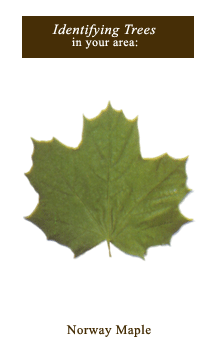 |
||||||||
 |
||||||||
|
Summer 2010 (click here to download word.doc) Summer 2010 Focus On: Rain, Rain Go Away…. We hope you have not been using your sprinkler system, because starting in early May rainfall has been excessive. While the grass and flowers are flourishing, fungal leaf diseases, insect populations and root stress compounded by our heavy clay soil are unfortunately flourishing on trees. Add the multiple days of unseasonably hot temperatures which began in early April and have been sporadic ever since, and you have a recipe for a myriad of tree problems. Diseases: -Apple Scab is and will be prevalent this year even on some treated trees. In our effort to be conservative and save our customers money, we usually recommend 2 spray applications and a 3 rd if we are having a wet spring. Because of the dry April most people did not receive a 3 rd application. Unfortunately the skies opened up beginning in early May and haven't stopped since so for next year we will be recommending 3 spray applications instead of just 2 to get better control. Irregardless, apple scab is not curable, only somewhat controllable, and always worse in years with heavy spring moisture. -Anthracnose has been severe this year, again in large part due to our wet weather. Sycamores and many Oaks were the hardest hit this year. Sanitation is important, raking up and destroying infected fallen leaves and late summer systemic treatment with a preventative fungicide will be recommended. -Oak Wilt, Dutch Elm Disease and Verticillium Wilt seem to be more prevalent and aggressive this year for unknown reasons, but moisture and hot temperatures could be a contributing factor. Insects: -Cottony Maple Scale has been seen in epidemic proportions this year, primarily on Silver and Red Maples. Scale insects are difficult to control due to their protective coating, which makes it nearly impossible for contact insecticides to be effective. Systemic injection followed by spray applications during the crawler stage are recommended. -Magnolia Scale has also been very severe and difficult to control. We continue to try all protective measures available to reduce the population and minimize the damage they cause. -Emerald Ash Borer We are still learning about this very invasive and aggressive insect. Our preventative protocol with Imidacloprid has been successful in most cases. However we have found a few cases in high population areas with renewed borer activity, which may be their aggressiveness or possibly they are building a resistance. For the future we plan to switch to an alternative injection method and chemical (only available since 2008) that we are told has a high 90% success rate. -Honey Locust Plant Bugs are leaf eating bugs which can cause the tree to appear in decline and dieback. Systemic insecticides are preferred over spraying as it is difficult to get good coverage over mature trees with tiny leaves. -Japanese Beetles have just arrived. These metallic green leaf eating insects prefer Lindens, Purple Plums and White Birch. Sprays or systemic injection are the most effective treatments, and in the event of high populations both may be necessary. -Bagworms We did not see a great deal of Bagworm activity in 2009, but it was heavy the previous several years. You are most likely to see them on Spruce and Arborvitaes as small cocoons that dangle from limbs with a needle eating worm inside the cocoon. Spray applications should be done as early as possible before too much damage is done. -Gypsy Moths are leaf eating caterpillars whose favorite fare is Oak trees. Their activity has been sporadic again this year. Other: -Chlorosis is a common problem in our area with Oaks, Birch and Maples having light green, pale or yellow leaves. This can be very serious as it is often the beginning of a decline process. Systemic and/or soil/root amendment treatments are recommended. -Decline can be caused by a multitude of things…improper planting, standing water, improper mulching, construction, over watering or drought, girdling roots, soil compaction and winter injury to name a few. We will continue to try to keep you informed and educate you on the proper care and maintenance of your trees as well as make appropriate recommendations to ensure the best health and well being of your trees. Sincerely, Judy & Karen Certified Arborists
------------------------------------------------------------------------------------------------------------
|
|||||||
©2006 Save A Tree - Design by Lost In Print |
||||||||
